The New York Palace is one of Budapest’s many must-see sights. The grand building is home to a hotel and its ground floor houses the famous New York Café, a luxurious coffeehouse and restaurant.
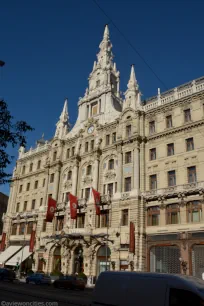
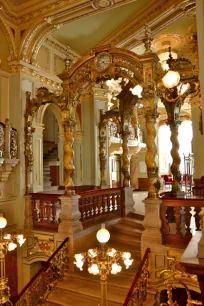
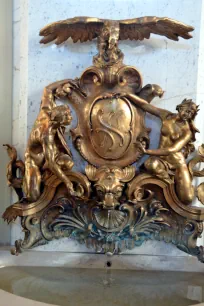
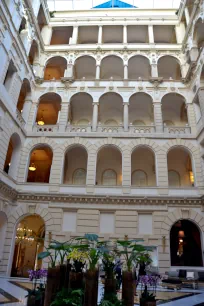
The New York Palace was built between 1890 and 1894 for the New York Insurance Company, hence its name. It was designed by the Hungarian architect Alajos Hauszmann, who was assisted by his compatriots Flóris Korb and Kálmán Giergl.
They created an impressive edifice in an eclectic style, heavily based on Italian Baroque. The main facade is embellished with plenty of reliefs and statues. The largest statues, including a bronze Lady Liberty at the rooftop, were created by sculptor Károly Senyei. At the street level, the facade is decorated with winged satyrs holding lanterns.
The New York Café
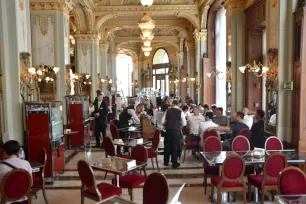
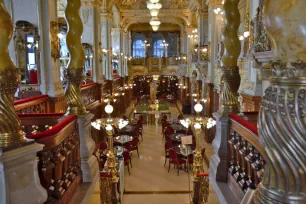
The ground floor of the New York Palace was planned as a coffeehouse, the New York kávéház (New York Café). At the end of the nineteenth century, coffeehouses were very popular in Budapest; at one point there were about five hundred of them. People visited the coffeehouses to discuss daily affairs, politics and even art.
The New York Café was undoubtedly the most sumptuous of all the coffeehouses in Budapest. It was decorated with ornaments, chandeliers and spiraled columns, all made from precious materials. As soon as it opened, the café was popular with writers and journalists. The story goes that on its opening day, the dramatist Ferenc Molnár threw the keys of the café in the Danube to ensure it would stay open day and night. In its heyday during the Belle Époque, when many of Hungary’s most renowned literary figures were regulars here, the New York Café was a center of intellectual life in Budapest.
The café remained popular throughout the 1920s and 1930s when it became known for its musical scene, but after the building was damaged during World War II it closed in 1947. Later a sporting goods store settled here. In 1954 the building was restored, and the café reopened as the Hungaria café and restaurant. Despite the owners’ efforts to recreate the atmosphere of the early twentieth century, the café never regained its former glory.
After the fall of Communism, the building stood empty for a decade until, in 2001, the Italian luxury hotel chain Boscolo purchased the New York Palace and started a thorough renovation that was concluded in 2006, when the New York Café reopened in all its splendor.
Today the café is popular with tourists, who come not only for the delicious food and drinks but also to admire the café’s lavish interior. It is so opulent that it can be compared to some of the most famous Baroque churches in Rome. Everywhere you look are marble columns and gilded ornaments. Chandeliers hang from the ceilings, which are richly decorated with relief sculptures and panel paintings. Strategically placed mirrors enhance the spacious feel of the interior. One of the most impressive decorations is a Baroque arch over the stairs to the restaurant area on the lower floor, supported by spiraling marble columns.
The Hotel
The Boscolo group not only renovated the New York Café, but it also redeveloped the former office building into a luxurious hotel with spacious rooms, a swimming pool, sauna and steam room. The hotel opened in May 2006 as the New York Palace Hotel, but it was later rebranded as Boscolo Budapest.

